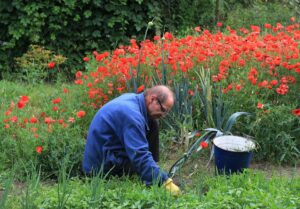There’s nothing better than gazing out of your front window and seeing a pristine patch of green staring back at you. A well-kept lawn can not only be a source of pride, but can also increase the value of your humble abode.
Taking good care of it then is a necessity. Thankfully, by following some basics tenants of lawn care, you can minimise your workload and prevent any issues getting out of hand.
Mowing
“When the grass looks long, I mow it.” Nothing wrong with that thinking. Nor is there anything terrifically wrong with mowing by the calendar, like your dad did every second Sunday.
But to get the best out of your lawn, the best rule to run with is the one-third rule. You want to mow often enough to not cut more than one-third of the height of the grass blade off. For example, if you set your mower to 6cm, when the grass gets to 9cm, it’s time to mow.
A calendar schedule is also fine, but needs to be adjusted to the time of year. Once a week is a good rule to go by, but this may increase in spring/summer to every 4-5 days, while in autumn/winter you may only need to roll the mower over every 1½ to 2 weeks.
Watering
No matter what climate you and your lawn find yourself in, you’ll most likely need to irrigate your lawn at some point during the year.
When you need to set the sprinklers loose, do so early in the morning. This lets the sun slowly dry the grass, taking away the chance of disease spreading through the lawn by excess moisture. Watering in the afternoon may evaporate away a lot of the water before it gets to the roots, and night-time watering will leave the grass soggy and disease friendly.
1-2 waters a week during drier times will keep your lawn looking fresh, but make sure they are long. Soaking the ground until the water gets around 5cm deep will encourage roots to grow and increase drought tolerance.
Aerating
An easy to ignore chore, aerating loosens hardening soil and allows your lawn to breathe.
Ideally the soil should be damp when aerating, as this allows the soil to be punctured more easily. Water prior to aeration, or wait for a nice soaking rain. It also helps to wait for your lawn to be actively growing, so spring is a great time of year to punch some holes in the dirt.
Fertilising
Your lawn likes to eat! And who can blame it. The trick is to know what constitutes a balanced diet. You don’t want your lawn to end up malnourished, or diabetic and rolling around the supermarket on a mobility scooter.
Often this simply means a good feed once a year, when your lawn is in its active growing phase. For cool-season grasses this is in both spring and autumn, while warm-season grasses get going when the weather heats up in spring and summer. Depending on your grass, it can go dormant in either extremes of heat or cold, and any food you toss it during these periods will have gone to waste.
Weeding
Remember that tetanus shot you had? Remember the Doc saying that prevention is better than a cure? The same applies to your lawn.
Using a weed preventer will vaccinate your lawn against a variety of different weeds. Depending on your location the weeds that you are looking to avoid will change, so it’s a matter of looking up when your weeds tend to germinate, and applying the preventer then.
For more ad hoc weeding, using granular products or a spray will get effective results. Fitting this into your mowing routine will mean that any potential outbreaks will soon be knocked on the head.
Lawn care shouldn’t be a chore, and if you’re regular with your efforts it will never turn into an untameable monster. Treat it well, and it will treat you well back.



